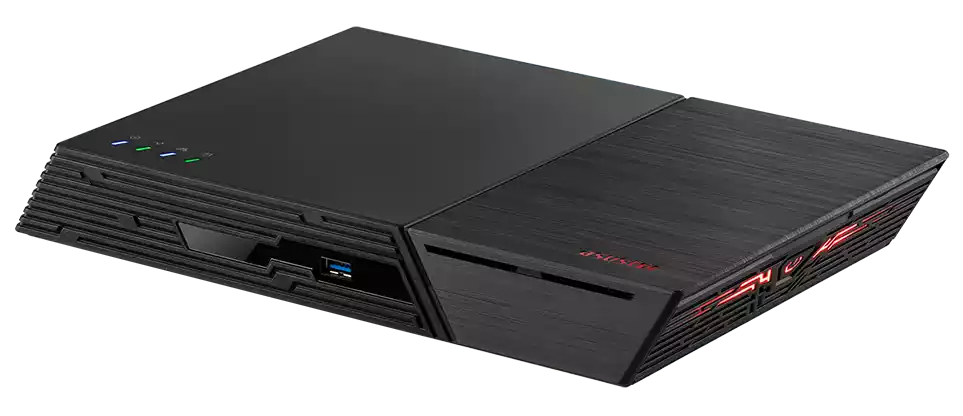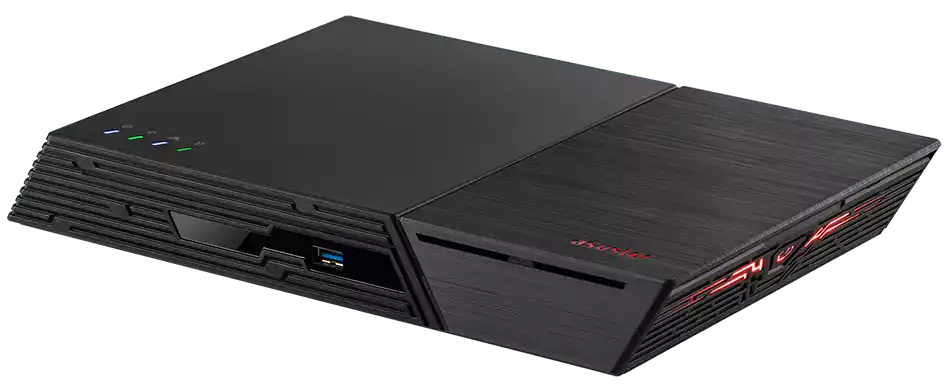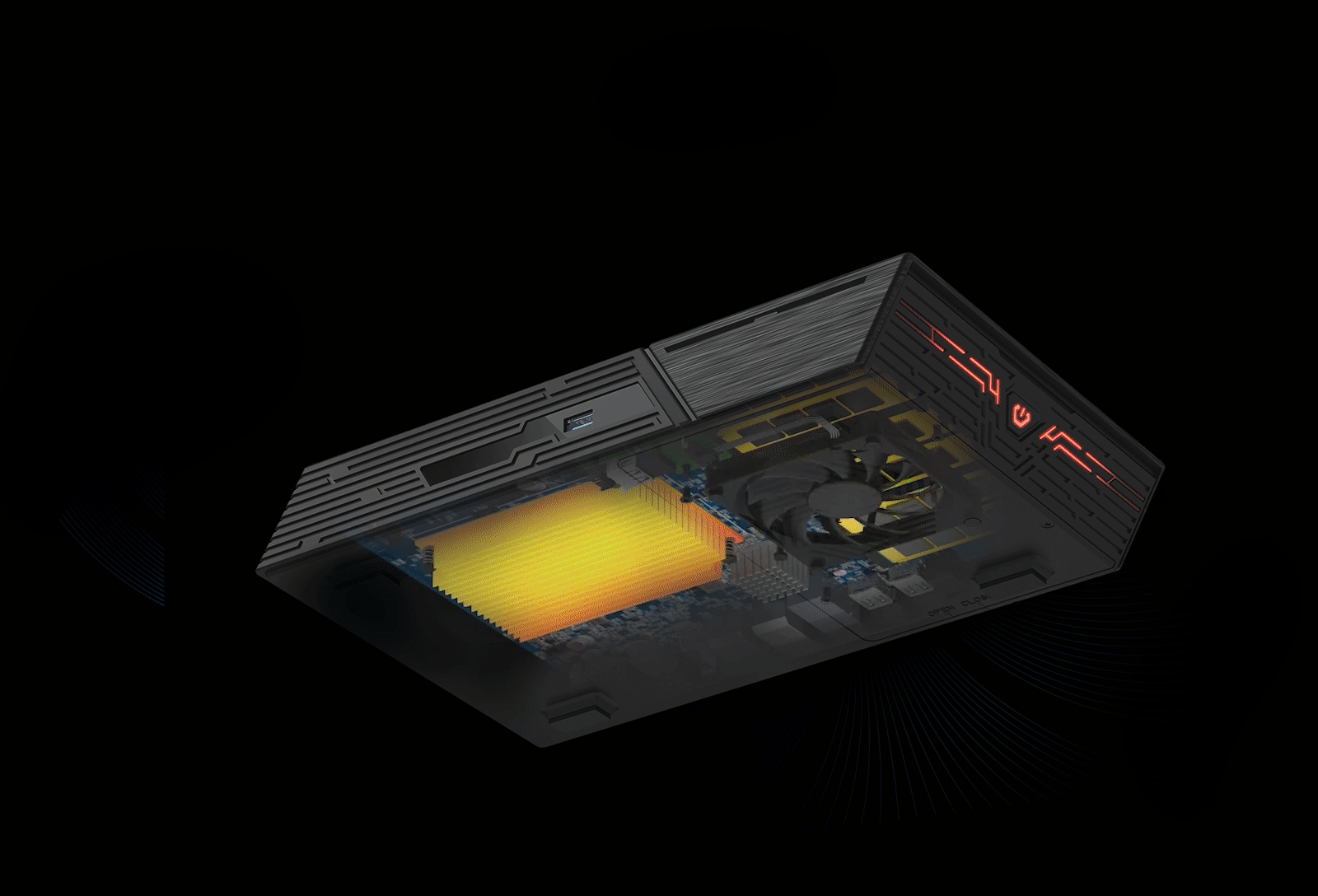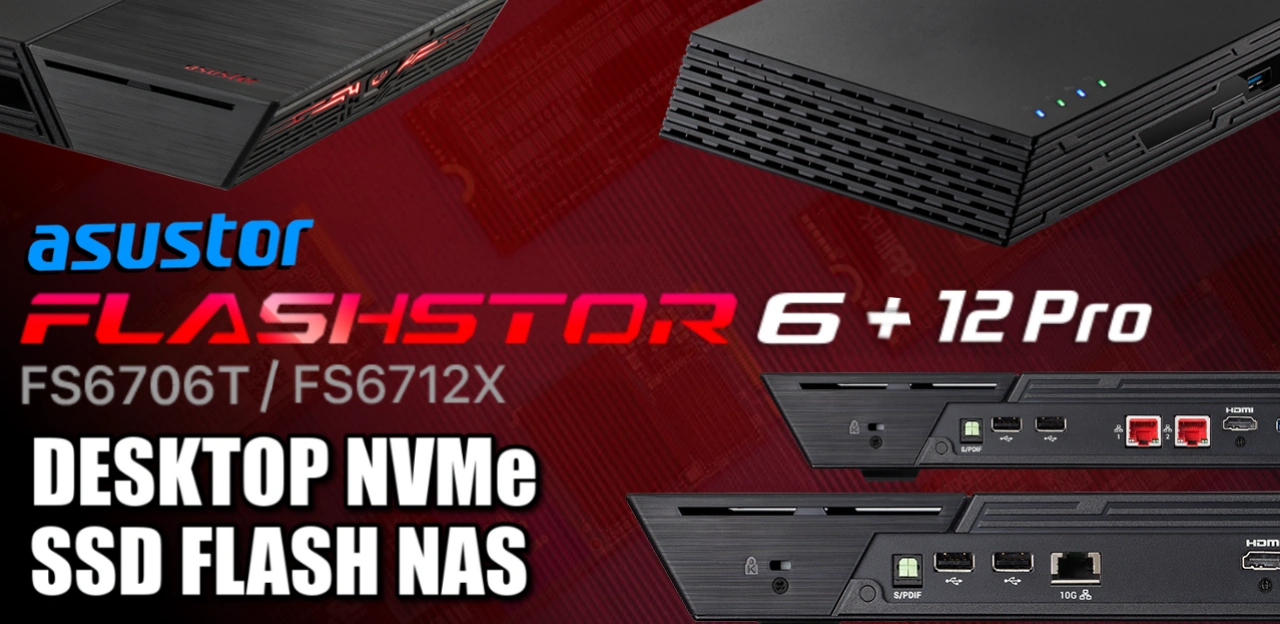Asustor FLASHSTOR 6 and 12 Pro – ASUSTOR’s first all-M.2 SSD NAS
The speed at which compact server development moves can be pretty groundbreaking, as hardware that even a 2-3 years ago though impossible/unthinkable, can suddenly become comparatively pedestrian. That said, one area of server storage that has still yet to genuinely see consumer or even relatively prosumer integration is desktop flash storage. Whether it is because the potential performance benefits are way beyond the average punter’s requirements, that SSD storage still commands a high price tag or that the maximum storage potential of SSD NAND is still dwarfed by even domestic HDDs, However, 2023 is starting to see these barriers get broken down one by one and into this arena comes a new Asustor NAS that really does break the mold on what a desktop NAS can be or is possible to be! The Asustor Flashstor series comprises a 6 Bay and 12 Bay compact desktop NAS that supports up to 6/12x m.2 Gen3* NVMe SSDs, respectively. Now, an ‘ALL-SSD’ desktop NAS server is not new, however, a dedicated pre-built turn-key M.2 NVMe SSD-Only system really, really is (with only a couple of other examples that spring to mind before this). With a new chassis design built around a very different kind of internal storage media than usual, an internal hardware architecture that is a noticeable degree more affordable than many other flash server systems and a few key differences between the Flashstor 6 and Flashstor 12 Pro beyond just the drive bays, let’s take a closer look at a new kind of NAS solution!
*Yes, you can use Gen4 SSDs, but you will be downgraded to Gen3)
Asustor FLASHSTOR 6 and 12 Pro Hardware Specifications
First up, let’s discuss the Flashstor 6 and Flashstor 12 Pro hardware specifications, as there is definitely a mixed back of things here that will please sum and potentially annoy others! The general architecture of CPU, Memory and lanes afforded to those M.2 NVMe slots are largely the same (though I am a little surprised the 12 Bay Pro arrives with 4GB of memory, the same as the 6-Bay system). There are certainly those that are going to be a little underwhelmed by the appearance of an Intel Celeron here, as opposed to a Xeon or Ryzen – as flash systems need a decent degree of horsepower to push those drives inside to their maximum throughput potential. However, Asustor is clearly aiming this system at a lower tier of flash user, rather than a full-guns-blazing enterprise flash data center!
| Model |  |
 |
|---|---|---|
 |
 |
|
| Model | FS6706T | FS6712X |
| PRICE | $499 – CHECK Amazon | $860 – CHECK Amazon |
| CPU | Intel Celeron N5105 Quad-Core 2.0GHz (burst up 2.90 GHz) Processor | Intel Celeron N5105 Quad-Core 2.0GHz (burst up 2.90 GHz) Processor |
| HARDWARE ENCRYPTION ENGINE |  |
 |
| HARDWARE ACCELERATION ENGINE | H.264 (AVC),H.265(HEVC), MPEG-4 Part 2, MPEG-2, VC-1 | H.264 (AVC),H.265(HEVC), MPEG-4 Part 2, MPEG-2, VC-1 |
| MEMORY | 4GB SO-DIMM DDR4 (4GB x1, Expandable. Max 16GB) | 4GB SO-DIMM DDR4 (4GB x1, Expandable. Max 16GB) |
| M.2 DRIVE SLOTS | 6 x NVMe/SATA | 12 x NVMe/SATA |
| HDD | N/A | N/A |
| MAXIMUM DRIVE BAYS WITH EXPANSION UNIT | 14 | 20 |
| SUPPORTS SINGLE VOLUME LARGER THAN 16TB |  |
 |


Asustor FLASHSTOR 6 and 12 Pro Ports and Connectivity
| PORTS AND CONNECTIONS |  |
 |
|---|---|---|
| EXPANSION | 2x USB 3.2 Gen 2, 2 x USB 2.0 | 2x USB 3.2 Gen 2, 2 x USB 2.0 |
| NETWORK | 2x 2.5 Gigabit Ethernet (2.5G/1G/100M) | 1 x 10 Gigabit Ethernet (10G/5G/2.5G/1G/100M/10M) |
| PCIE EXPANSION SLOTS | – | – |
| LCD PANEL | – | – |
| SIZE | 48.3 (H) x 308.26 (W) x 193 (D) mm | 48.3 (H) x 308.26 (W) x 193 (D) mm |
| WEIGHT | 1.35kg / 2.98 lb | 1.37 kg / 3 lb |
| INPUT POWER VOLTAGE | External Power Adaptor: 65W x1 100V to 240V AC |
External Power Adaptor: 90W x1 100V to 240V AC |
| POWER CONSUMPTION | 18.2 W (Operation); 0.83 W (Sleep Mode) |
26 W (Operation); |
| VOLUME TYPE | Single disk, JBOD, RAID 0, RAID 1, RAID 5, RAID 6, RAID 10 | Single disk, JBOD, RAID 0, RAID 1, RAID 5, RAID 6, RAID 10 |
| HDMI OUTPUT | 1x HDMI 2.0b, 1x S/PDIF | 1x HDMI 2.0b, 1x S/PDIF |
| INFRARED RECEIVER | – | – |
| AUDIO OUTPUT | S/PDIF x1 | S/PDIF x1 |
| TRAY LOCK |  |
 |
| MYARCHIVE DISK BAYS | 5 | 11 |
| SERVICE LED INDICATOR | – | – |
| REDUNDANT POWER SUPPLY | – | – |
Now there are DEFINITELY going to be two very different kinds of people that are reading the ports and connections above for the Flashstor 6 and Flashstor 12 Pro. Those that weigh up the price vs return of what is on offer across these systems are going to be quite happy. We have a choice of 2x 2.5GbE or 10GbE (scale/version dependant), with support of USB adapters to increase network connectivity that is further emboldened by things like SMB Multichannel and Port Trunking to open up these network speeds. Although clearly the performance potential of the M.2 NVMes are going to be greater internally, you are still going to have somewhere between 5Gbe and 10GbE (so 500-1,000MB/s or so) to play with externally. However, given that each of those M.2 NVMes has the potential for 1,000MB/s EACH in a 3×1 slot, that is quite a heft reduction to accept for 6-12x M.2NVMes in terms of external transfer speeds. Though the Asustor Flashstor 6 and Flashstor 12 Pro are very much ‘entry level’ flash systems, there is no avoiding that the brand has clearly had to introduce a level of compromise to the hardware in order to remain in this price bracket of $499 and $860 (at time of writing on Amazon.com). It’s worth also remembering too that the Flashstor series is not just hardware, but also includes the Asustor ADM NAS software. Let’s discuss what these two NAS’ support in ADM.
Asustor Flashstor 6 and Flashstor 12 Pro NAS – ADM Software
The Asustor Flashstor NAS arrives with the latest version of ADM included. Additionally, this software receives frequent updates to ensure that the software runs the very best it can on this system, as well as keeping up to date with security patches and application versions. The NAS software is accessible via a web browser and displayed very much like a normal computer operating system (desktop, user accounts, customizable themes, file management, running multiple tasks in windows that can be switched in the native tabs), but there are also a range of desktop client tools for accessing the NAS on your local machine natively, as well as a whole bunch of mobile applications that allow tailored access from your phone/tablet in more task-specific means (eg a photo app for viewing pictures and creating phone backup routines, a video app for enjoying your movies and boxsets, surveillance app to access your cameras, etc). There is also a large range of support of 3rd party applications too in the ADM platform. Asustor is not as big a company as the likes of Synology and QNAP, whole put ALOT more money into their software development, but Asustor try to counter this by (when they do not have an in-house app) making native versions of 3rd party tools in their platform (example, they do not have a 1st party Virtual Machine app, but DO include huge support for VirtualBox). The platform is not quite as fully featured as DSM and QTS, but it is still a very smooth and accessible software platform. The app center has a few more 3rd party applications and slightly crowbarred software (eg the Amazon Media and Streaming service plugins) that is not updated up the original uploaders anywhere near enough (leading to running issues on these tools), but the 1st party apps run very well. The big takeaway on the Asustor software and it’s services is that the standard class of expected features of a modern NAS in 2022/2023 are here and run exactly as you would want, it is just some of the additional ones that other platforms have doubled down on (such as AI-related services in Photography and Surveillance for example) that are a little lacking. That said, the brand has definitely ramped up a number of the key security protocols and settings in the default setup.
| SOFTWARE & FEATURES | ||
|---|---|---|
| FS6706T | FS6712X | |
| MAX. RESOLUTION | 2160P 4K | 2160P 4K |
| File Sharing | ||
| MAXIMUM NUMBER OF USERS | 4096 | 4096 |
| MAXIMUM NUMBER OF GROUPS | 512 | 512 |
| MAXIMUM NUMBER OF SHARED FOLDERS | 512 | 512 |
| MAXIMUM NUMBER OF CONCURRENT CONNECTIONS | 512 | 512 |
| iSCSI | ||
| MAXIMUM TARGETS | 256 | 256 |
| MAXIMUM LUNS | 256 | 256 |
| Virtualization Support | ||
| VMWARE READY | NFS, iSCSI | NFS, iSCSI |
| CITRIX READY |  |
 |
| HYPER-V READY |  |
 |
| Eco-Friendly Design | ||
| AUTO-STANDBY FOR BOTH INTERNAL AND EXTERNAL DISKS |  |
 |
| SYSTEM AUTOMATICALLY ENTERS SLEEP MODE (SCHEDULE S3) |  |
 |
| WAKE-ON-LAN (WOL) |  |
 |
| WAKE-ON-WAN(WOW) | – |  |
| ASUSTOR PORTAL |
|
|
|---|---|---|
| PHOTO GALLERY 3 |  |
 |
| FTP EXPLORER |  |
 |
| HIDRIVE BACKUP |  |
 |
| GOOGLE DRIVE |  |
 |
| DROPBOX |  |
 |
| MAIL SERVER |  |
 |
| DOWNLOAD CENTER |  |
 |
| PLEX MEDIA SERVER |  |
 |
| VPN SERVER |  |
 |
| MAX. NO. OF VPN SERVER CONNECTIONS | 20 | 20 |
| Surveillance Center | ||
| MAX. NO. OF SUPPORTED CAMERAS (WITH ADD-ON LICENSES) | 44 | 44 |
| SoundsGood | ||
| WEB BROWSER PLAYBACK |  |
 |
| LOCAL PLAYBACK |
|
|
| PLAYBACK VIA OTHER DEVICES |
|
|
| PLAYBACK VIA OTHER DEVICES |
|
|
Asustor FLASHSTOR 6 and 12 Pro – Price and Release Date
It would appear that the Asustor Flashstor series are available NOW and are listed online at the usual websites. Pricing, especially for the 6x M.2 NVMe version seems remarkably reasonable ($499 on Amazon.com at the time of writing), which given the scope of hardware here versus the 4-Bay Asustor Lockerstor Gen 4 at $609 (4x SATA + 4x NVMe Bays), is remarkably good value for a flash focused desktop NAS system. As long as you keep in mind that this is still an Intel Celeron-powered system, then you should be very happy with what you are getting here. Plus, the performance of ADM on the Lockerstor with this same architecture (CPU+Memory) has already been proven to work very well indeed. If you take FLASH servers very seriously, you are probably not gonna love this, but for those looking for an affordable home NAS SSD optimized solution in desktop form. There is alot to love here! I look forward to reviewing the Flashstor 6 and Flashstor 12 Pro later in 2023.
 |
 |
 |
 |
| FS6706T | FS6712X |
| $499 – CHECK Amazon | $860 – CHECK Amazon |
📧 SUBSCRIBE TO OUR NEWSLETTER 🔔 This description contains links to Amazon. These links will take you to some of the products mentioned in today's content. As an Amazon Associate, I earn from qualifying purchases. Visit the NASCompares Deal Finder to find the best place to buy this device in your region, based on Service, Support and Reputation - Just Search for your NAS Drive in the Box Below
🔒 Join Inner Circle
Get an alert every time something gets added to this specific article!
Need Advice on Data Storage from an Expert?
Finally, for free advice about your setup, just leave a message in the comments below here at NASCompares.com and we will get back to you.
 Need Help?
Where possible (and where appropriate) please provide as much information about your requirements, as then I can arrange the best answer and solution to your needs. Do not worry about your e-mail address being required, it will NOT be used in a mailing list and will NOT be used in any way other than to respond to your enquiry.
Need Help?
Where possible (and where appropriate) please provide as much information about your requirements, as then I can arrange the best answer and solution to your needs. Do not worry about your e-mail address being required, it will NOT be used in a mailing list and will NOT be used in any way other than to respond to your enquiry.
TRY CHAT
Terms and Conditions


| Where to Buy a Product | |||
|
|
    
|

|
VISIT RETAILER ➤ |
 |
    
|

|
VISIT RETAILER ➤ |
 |
    
|

|
VISIT RETAILER ➤ |
 |
    
|

|
VISIT RETAILER ➤ |
We use affiliate links on the blog allowing NAScompares information and advice service to be free of charge to you. Anything you purchase on the day you click on our links will generate a small commission which is used to run the website. Here is a link for Amazon and B&H. You can also get me a ☕ Ko-fi or old school Paypal. Thanks! To find out more about how to support this advice service check HERE
A Buyer's Guide to Travel Routers - GET IT RIGHT, FIRST TIME
Jonsbo N6 DIY NAS Case Review
The Best Bits (and Worst Bits) of NAS of 2025!
Minisforum MS-02 Ultra Review
Minisforum N5 NAS, 6 Months Later - Better, Worse, the Same?
Beelink ME Pro NAS Revealed
Access content via Patreon or KO-FI
Discover more from NAS Compares
Subscribe to get the latest posts sent to your email.






Would’ve loved to get this had the PCIe slots been PCIe 4.0, even 3.0, but this product just sounds disappointing now, I had my head in my arms after finding that out.
REPLY ON YOUTUBE
Next time, please do deep review for Adm Firewall. I guess many people like this!
REPLY ON YOUTUBE
Great review as always.
Apart from the higher cost/lower capacity of NVMEs compared to HDDs would you still recommend this 12 pro nvme NAS for video editing off of the server through 10Gbe, compared to a traditional 8-bay NAS with nvME caching?
REPLY ON YOUTUBE
Since I want a virtualized full flash NAS with proxmox as hypervizor, this checks all the boxes but intel cpu and ram
REPLY ON YOUTUBE
I bought the 12 bay version recently and found the CPU was overheating. Got to 80-85 degrees centigrade while pretty much at idle. I also found the USB transfer speed to my Samsung T7 underwhelming. When I transferred a large UHD Blu Ray rip, it was maxing out at maybe 200MBps at best. Similar speeds were observed when transferring from one internal volume to another on a different SSD. Can you guys test this out at your end for the hardware review please?
We will do some testing about this.
I’m still trying to figure out a use for this. If it’s for media, then the cost of the storage for typically large media files is going to be far too expensive for a collection of any decent size. Besides, media files typically don’t need really fast access. In my experience with 3 brand name NAS’s, conventional HDD’s are just fine. If you are using this for smaller files, like in an office environment, then a conventional NAS with HDD’s is plenty fast in my experience. And if you need to speed up that conventional NAS, then a single SSD for cache may be the answer. I’m sure there are a lot of more knowledgeable users with different uses for this who could fill in the gaps for me but I just don’t see a practical value for money use for this NAS.
REPLY ON YOUTUBE
I’d like to know if it’s really fast because so far it doesn’t seem to be Could you do a CrystalDiskMark on a raid 10 array through the 10GB network?
REPLY ON YOUTUBE
Can we run unraid on these systems?
REPLY ON YOUTUBE
Excellent channel for listening to and get smarter while working.
However, sometimes the mic pick up a bit too much breathing and I find it uncomfortable, especially with headset
REPLY ON YOUTUBE
Pointless product.
REPLY ON YOUTUBE
I don’t need massive throughput. I need quite a lot of storage (12 – 18 TB), and I want it to be quiet and low power – which rules out large conventional drives, or multiple smaller conventional drives in a traditional NAS – it’s too noisy and uses too much power. Large capacity SSDs drives don’t exist, and there is currently no real cost penalty to NVMe over SATA SSDs, so NVMe it is. But I’d need to have a bunch of them. One option is a distributed filesystem like Ceph over several low power NUCs or Raspberry Pi type devices, but it’s a lot of faff. Or a custom PC with extra NVMe storage via PCI-x cards – but can that be power efficient? This Flashstor device might be the exact thing I need.
REPLY ON YOUTUBE
Super interesting devices, no seeing any UK distributors stocking these at the moment unfortunately.
REPLY ON YOUTUBE
I picked up one of these (the 12 bay) because I don’t have massive data storage requirements and like the idea of a near silent NAS with great performance and the option to expand down the track if needed.
Have had to log a support docket unfortunately due to an issue with the CPU overheating. System and NVME temps all normal but CPU sitting at 80C+ at idle.
To their credit, they responded quickly and are troubleshooting.
REPLY ON YOUTUBE
Regarding the USB Ports, I was totally WRONG! They are 10Gb(s). Yep, hands in the air. Massive brain fart on my part! In my haste I misread the ‘USB 3.2 Gen 2×1’ as ‘USB 3.2 Gen 1×2’ – eg two USB 5Gb/s ports (my script notes are bullet points when recording). Absolutely premium F-up on my part. Gonna pin this comment to highlight my shame and correct!
REPLY ON YOUTUBE
USB 3.2 Gen 2×1 is 10Gbps… ????
REPLY ON YOUTUBE
It looks like, from the promotional material, that Asustor is promoting this as a home media center. I mean, when was the last time you saw TOSlink on a NAS?
REPLY ON YOUTUBE
Those mining board with tons of x1 slot possible can build can build something similar? There is adapter for pcie x1 to nvme,straight
Some mining board got 16 or more nvme x1 slot , slap those adapter and plug tons of nvme x1 there
Unfortunately many of them are running through pch which may causing bottleneck
REPLY ON YOUTUBE
N5105 lol Are they serious? It only gets 8 PCIe gen3 lanes lolol
REPLY ON YOUTUBE
Could I add a USB Wi-Fi adapter and connect to a router while also connecting to a PC via the ethernet port (separate LAN address of course)? I’m assuming yes.
REPLY ON YOUTUBE
It is the future eventually. We just need to wait for affordable high capacity NVMes. I wish we could get some low cost “archive type” SSDs: more capacity at lower speeds, e.g. 16TB@1000Mbps. I’d get some including this Flashstor ????
REPLY ON YOUTUBE
really struggling to understand what anyone would use this for. It appears its geared towards being a QUIET low powered media center. Maybe for someone who doesn’t have the space to store disk based nas anywhere and doesn’t have the internet connection to stream but otherwise it feels like it would be too expensive for other purposes.
REPLY ON YOUTUBE
FFS! instead of going with a beautiful ryzen CPU tgsr could support ECC RAM they dechded that the safety of our data is not important 🙁
Unbelievable.. and what a shame in 2023!
Hopefully the new product Linus Sebastian invested in won’t do the same unforgivable mistake.
REPLY ON YOUTUBE
0:48 our USB implementation is 10 Gbps
REPLY ON YOUTUBE
Running the Flashstor 6 with 4 drives now – OK so far – currently playing with different RAID configs and wondering if I should just go JBOD for editing with this. Have the Synology 920/923’s as primary backup/duplication.
REPLY ON YOUTUBE
If i connect to the NAS via USB it will simply act like an external hard drive wouldn’t it?
REPLY ON YOUTUBE
Thanks man! Was just wondering on the duel can it play 4k to an android device. And the magnet Downloader, is it a seamless thing to use and get good download speeds?
REPLY ON YOUTUBE
plex will still work after the beta update? im using as5104t nas
REPLY ON YOUTUBE
Good review, thank you. Would like to see the resources utilized WITHOUT the surveillance BETA software running. Many users likely use their NAS for surveillance duties, but in my home/office environment, we have our own security and the NAS is dedicated to media and storage. After watching this review, I am uncertain if there are sufficient memory resources for an environment that does not include surveillance.
REPLY ON YOUTUBE